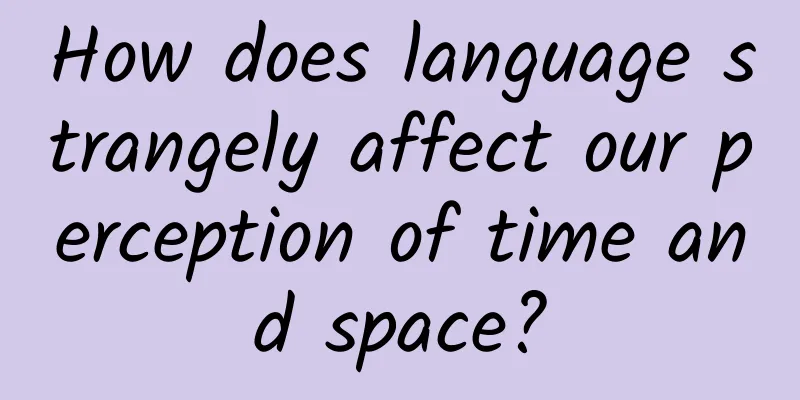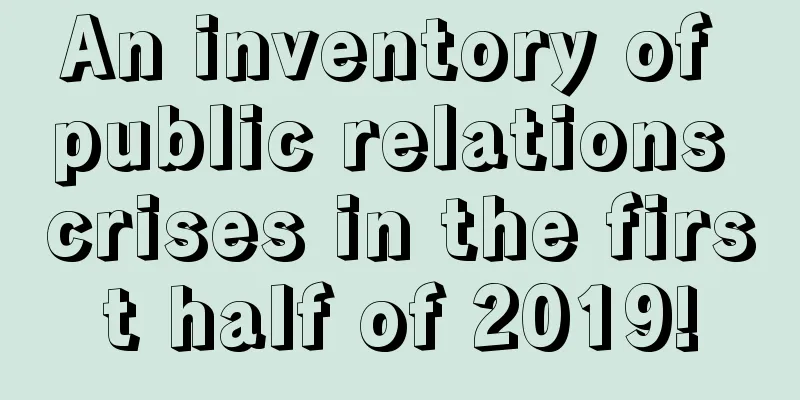How does language strangely affect our perception of time and space?

|
© Film Music Central Leviathan Press: Have you ever wondered why yesterday's yesterday is called "the day before yesterday" in Chinese? Why is next year called "the year after next"? Why does "上" in "上月" represent the past? Why does "下" in "下周" refer to the future? From this, we may be able to raise a question: Does language affect the way of thinking? Or in other words, which is the cause and which is the effect, thinking or language? So, when you say very naturally, "The future is not far ahead" - not everyone on the planet will understand what you mean. At least, for those who are accustomed to thinking of the future as the future (such as the Aymara people living in South America), it must be confusing. If someone asked you to walk diagonally across a field, would you know how to do it? If you were offered £20 right now, but it would double in a month, would you wait? If I asked you to arrange 10 photos of your parents in chronological order, how would you do it? Vertically or horizontally? Which direction does time go? These may seem like simple questions, but the point is that your answers will likely be influenced by the language you speak (or even multiple languages). In his new book, Are You Thinking Clearly?, the author explores the various internal and external factors that influence and even manipulate the way we think, from genetic factors to digital technology and advertising. The final conclusion is that language can actually affect our perception of two important dimensions: time and space. In fact, the relationship between language and time and space is at the heart of a long-debated question: Is thinking some universal activity that exists independently of language? Or is thinking determined by language, and there would be no thinking without language? In the current academic community, few researchers believe that human thinking is entirely shaped by language—after all, we know that infants and young children can think before they can speak [1]. However, more and more experts believe that language does affect the way we think, just as thinking activities and cultural products shape the way language develops. "In fact, the two influence each other and complement each other," said Thora Tenbrink, a linguist at Bangor University in the UK. Daniel Casasanto, a cognitive psychologist at Cornell University in the United States, said that the evidence that language affects thinking is too overwhelming to ignore. For example, we know that people are better able to remember things they pay more attention to[2]. Different languages have different emphases, which in turn leads to different focuses of our attention, such as gender, sports or colors. "I don't think anyone would dispute this cognitive principle," Casasanto said. Chinese speakers often think of time as a vertical line, with downwards representing the future. © Global Fund for Community Foundations For decades, linguists, neuroscientists, psychologists, and others have been studying how language affects thinking. They usually focus on abstract concepts such as time and space, which are completely open to interpretation. However, it is not easy to get scientifically meaningful results. If we simply compare the differences in behavior and thought patterns between people who speak different languages, it’s hard to determine whether the differences are due to language, culture, personality, or something else. Language also plays a central role in how we express ourselves, which makes it difficult to separate it from other factors. Fortunately, there are ways to get around this problem. For example, Casasanto often teaches volunteers in his lab to use metaphors from other languages (relative to their native language) to study how these metaphors affect their thought processes. We know that people often think about abstract concepts in metaphors, such as "high price," "long time," and "clouds of doubt." This method can eliminate the influence of different cultural backgrounds on volunteers - which is exactly the most likely interference factor. Instead, Casasanto is studying how the thinking patterns of the same group of people in the same culture change when speaking two (or more) different languages . Therefore, the research process eliminates cultural differences. © The University of British Columbia Cognitive scientist Lera Boroditsky is one of the pioneers in studying how language affects thinking. Her research shows that English speakers tend to view time as a horizontal line.[3] They often say, “The meeting is brought forward ” or “The deadline is pushed back .” They also tend to view time as flowing from left to right, just as English speakers read and write from left to right. This connection between reading direction and perception of time is also seen in other languages. For example, Hebrew speakers read and write from right to left, and they depict the flow of time in the same direction.[4] If you ask a Hebrew speaker to arrange photographs in chronological order, they will most likely put the oldest photos on the far right and then move them chronologically to the left. © Plaid Swan Meanwhile, Chinese speakers often view time as a vertical line, with top representing the past and bottom representing the future.[5] They often use the word “next” when talking about future events, such as “ next week ” or “ next month .” Like English and Hebrew, Chinese is also concerned with reading and writing direction—in China, the traditional direction of writing is from the top of the page to the bottom. Chinese is also about reading and writing direction - in China, the traditional direction of writing is from the top of the page to the bottom. © Nan Rae When dealing with time-related issues, our cognition is also affected by the relationship between language and thinking style. If time-related information is organized in a way that matches the language used, the processing speed of such information will be faster. For example, one experiment asked volunteers who knew only English to press a key to determine whether a photo in front of them depicted a scene from the future (represented by science fiction-style images) or a scene from the past. The results showed that when the key representing the past was to the left of the key representing the future, they made the judgment significantly faster. When the two keys were arranged one above the other, it made no difference which key was on top or the other. However, when it comes to volunteers who are fluent in more than one language, things get weird. “With bilinguals, you’re essentially looking at two language patterns in the same brain,” says Panos Athanasopoulos, a linguist at Lancaster University in the UK. “That means if you see behavioral patterns change in the same person when the language environment changes, that suggests a causal relationship between language and cognitive processes.” Bilinguals' minds can adapt to two different modes of organizing time—especially if they acquire both languages as children. Chinese-English bilinguals living in Singapore also showed a preference for left-to-right temporal organization rather than right-to-left. However, most surprisingly, when the future key was below the past key (which is consistent with the temporal organization pattern in Chinese), this group of people were also able to respond significantly faster. This just shows that the thinking of bilinguals can adapt to two different temporal organization patterns - especially if they learn both languages at a young age. However, we are not always locked into one mode of thinking. Interestingly, Casasanto has demonstrated[6] that simply training volunteers to read reverse texts—that is, to read and write in the opposite direction to what they were used to—can quickly reverse the way the volunteers organize time in their minds. That is, after training, they can respond more quickly to statements that are organized in the opposite direction (relative to the direction the volunteers were used to). It’s even more interesting. In countries where English and many other European languages are spoken, people often think of the past as being behind us and the future as being ahead of us. For example, the Swedish word for “future,” framtid, literally means “the time ahead.” But in the Aymara language, spoken by the Aymara people (who live in the Andes Mountains in Bolivia, Chile, Peru, and Argentina), the word for the future literally means “the time behind us.” The reason for this is that, since we can’t see the future, it must be behind us. In fact, when the Aymara people talk about the future, they often gesture backwards.[7] Meanwhile, Spanish speakers, who also live in the Andes, see the future as being ahead and often gesture forwards when talking about it. Like the Aymara people, Chinese speakers see the future as being behind and the past as being ahead, for example, calling yesterday’s yesterday “the day before yesterday ” and tomorrow’s tomorrow “ the day after tomorrow .”[8] And those who speak both Chinese and English often switch between the two modes, sometimes even to the point of conflict. Will you bring an umbrella to work tomorrow? Or did you do it yesterday? The answer may depend on what language you speak. © Ian Barnes/Getty Images In particular, Casasanto noted that people often use spatial metaphors when talking about duration. For example, in English, French, German, and Scandinavian languages, people use "long" to refer to long meetings and "short" to refer to short vacations. Casasanto demonstrated experimentally that the use of these metaphors is not just a matter of speaking habit - people always imagine the "length" of time as lines in space. At first, Casasanto thought that this tendency to use spatial metaphors to express the "length" of time was shared by all people, regardless of their language. But when he presented his findings at a conference in Greece, a local researcher interrupted him and insisted that Greek speakers didn't do that. "My first reaction was a little bit of disdain," says Casasanto, who was so convinced of his findings. But even so, he eventually "stopped speaking and listened to the Greek researcher's point of view." This unexpected event changed the focus of Casasanto’s research, making him more interested in language-related differences in thinking patterns rather than commonalities. He found[9] that the Greeks tended to view time as a three-dimensional entity that could hold things, such as a bottle. Thus, the Greeks referred to long meetings as “big” or “many” rather than “long”, and short vacations as “small” rather than “short”. The same is true for Spanish. “In English, I can say ‘it’s a long time,’ but if I use that expression with a Greek person, they’ll find it funny,” said Athanasioupoulos, a native Greek speaker. “ They’ll even think I’m being poetic or trying to emphasize something. ” Asanas Soberos found Casasanto’s results interesting and set out to investigate the problem himself.[10] He asked Spanish-speaking and Swedish-speaking volunteers to sit in front of a computer screen and watch a line lengthen and a container grow larger, and then to estimate how long the whole process lasted. The key point here is that the line lengthens at a different rate than the container grows larger. People who only speak Swedish were easily misled when they saw lines on the screen - they always thought that longer lines meant more time had passed, even if this was not the case. However, when they saw the container getting bigger, these people who only speak Swedish were not affected. The opposite was true for people who only speak Spanish. Then, Athanasiouboros went a step further and studied bilingual speakers who spoke both Spanish and Swedish. His results were significant. When the Swedish word for duration (tid) appeared at the top of the computer screen, the bilinguals estimated the length of time by the length of the line, and were not affected by the volume of the container. But when the word for duration was changed to Spanish (duración), the results were completely reversed. So, how deeply is the thinking mode of bilingual speakers in processing time-related concepts influenced by the relevant metaphors in the second language? This is related to their mastery of the second language. © Quanta Magazine These linguistic phenomena are undoubtedly interesting, but how much influence do they have on our thinking? Casasanto makes a strange argument. If you imagine time as a line, then every point on the line is fixed and cannot exchange positions - this is often called the "arrow of time", which has only one direction. However, if you imagine time as a container, then the points representing time can float around, which makes it possible for them to exchange positions. “I’ve always wondered, since physics is a subject that’s so tied to time, and since the main founders of modern physics were people who spoke English, German, or French, is the subject itself influenced by those languages? ” Casasanto said. “I have always wondered if physics, a subject so closely tied to time, and the main founders of modern physics were people who spoke English, German, or French, was influenced by these languages?” — Daniel Casasanto © Forbes You know, one of the things that's holding back the unification of all branches of physics right now is time. And it's even more interesting that the way we deal with time in physics is really getting tricky. Physicists have always imagined time as an arrow that just goes from the past to the future. However, modern physics theory is obviously much more complicated. For example, in Einstein's general theory of relativity, on the largest cosmic scales, time doesn't seem to flow that way at all - a concept that, admittedly, even many physicists find weird. In contrast, in Einstein's theory, the past, present, and future all seem to exist simultaneously, as if swimming around in a bottle. So the metaphor of time as a line may be holding back further progress in physics. "If this is true, it would certainly be a major influence of language on human thinking," Casasanto said. In fact, some languages encode the concept of time in their grammatical rules. For example, in English, the future is one of the three basic tenses (past, present, and future), as in “it rained,” “it rains,” and “it will rain.” Many other languages, like German, such as Chinese, use only external words to indicate that something is happening in the future, without resorting to grammatical rules, such as “I’m going on vacation next month.” However, will this affect our thinking? In 2013, Keith Chen, a behavioral economist at the University of California, Los Angeles, began to study through experiments whether volunteers who spoke "no future tense" languages felt closer to the future? Specifically, German, Chinese, Japanese, Dutch and Scandinavian languages have no grammatical distinction between the past, present and future ; while English, French, Italian, Spanish and Greek emphasize the distinction between the past, present and future in their grammar. In other words, these languages encourage users to distinguish the future from the past and present. As a result, Keith Chen found that volunteers who used language without future tense were more likely to participate in future-focused activities.[11] Compared with volunteers who used language with future tense, volunteers who used language without future tense (or had already done so) were 31% more likely to save money each year, had 39% more accumulated wealth by the time they retired, were 24% less likely to smoke, were 29% more likely to be physically active, and were 13% less likely to be obese. These results generally held true even after controlling for factors such as socioeconomic status and religious beliefs. In fact, OECD countries (industrialized countries) that used language without future tense saved 5% more of their GDP each year. This connection seems to be just a coincidence, and complex historical and political factors may be the real reason. However, Keith Chen then studied whether factors such as history and culture would also affect the above results. It was found that when external factors were taken into account, the correlation did weaken, but it still held true in most cases. "In my opinion, this hypothesis is very likely to be true." Chen said. The Aymara people believe that since we cannot see the future, it must be behind us. © Cinema Tropical In 2018, an experiment conducted in Merano, a bilingual city in northern Italy, also supported Keith Chen's hypothesis [12]. About half of Merano's residents speak German, a language without future tense, and the other half speak Italian, a language with future tense. The researchers tested 1,154 local primary school students, giving them two choices - one was to get two tokens at the end of the experiment (which could be exchanged for relevant rewards immediately), and the other was to get a larger reward (three, four, or five tokens) four weeks later - to test the students' ability to resist temptation. The results showed that German-speaking pupils were 16% more likely to wait, which was consistent with Chen's hypothesis. This result remained true even after controlling for risk preferences, IQ, family background and residential area. © NPR However, the influence of language can even go deeper into the physical world - affecting the way we orient ourselves in physical space. Different languages force us to think about our position in space using different "frames of reference". For example, Boroditsky and his colleague Alice Gaby have shown[13] that the Kuk-Sa-Youri people of Australia use words to represent directions, such as “ the cup is to your southwest, ” when talking about even the most mundane things. These are so-called “absolute reference frames”—they provide coordinates that are independent of the observer’s perspective or the location of the reference object. However, many languages, including English, use vaguer words to refer to spatial locations, such as "beside," "to the left," "above," and "below." Not only that, the reference frames used by these languages are also quite vague. If someone tells you to pick up the key to the right of your computer, are they talking about the right side of the computer, or the right side of the computer as you look at it? If it's the former, it's the "internal reference frame" (with two reference points: the computer and the key), and if it's the latter, it's the "relative reference frame" (with three points: the computer, the key, and the observer). This obviously affects how we think and how we orient ourselves. Tenbrink and his colleagues compared the use of reference frames in English and Spanish. In one experiment, Tenbrink asked volunteers to judge whether an object (such as a ball) was located to the left or right of a central image (an animal, person, or other object) based on descriptions given in English or Spanish. For example, the experimenter gave two descriptions: one was, "I see a dog. There is also a ball to the left"; the other was, "I see a dog and there is also a ball to the left of the dog." In English, these two descriptions would be ambiguous, but when both descriptions are said in Spanish, the listener would understand that the ball is to the left of the dog. It is becoming increasingly clear that language affects the way we understand the world. The results of the experiment showed that volunteers who only spoke Spanish used the internal reference frame 78% of the time, while volunteers who only spoke English used the internal reference frame only 52% of the time.[14] English-speaking volunteers only used the internal reference frame when they heard the description "there is a ball to the left of the dog", while Spanish-speaking volunteers tended to use the internal reference frame regardless of the description they heard - unless the central reference object was not a living object (or life-containing object) such as a dog, a statue, or a person, but a bottle, a car, or the like. In a follow-up experiment by Tenbrink [15], the results showed that bilingual speakers of both English and Spanish performed somewhere between those who spoke only one of the languages and were more likely to be influenced by the reference frame most commonly used in the country in which they lived. “Spanish speakers represent spatial relationships slightly differently than English speakers,” Tenbrink said. “If you speak both languages, you see different preferences. I think that’s interesting because people don’t usually realize that their language habits change when they learn a second language. ” In short, you have to remember that if you are going to arrange a meeting place with someone who speaks a different language, you must be careful about expressing directions. In addition, speakers of some languages pay more attention to the action itself than to the environment in which the action occurs. Experiments show[16] that when watching videos involving action, volunteers who speak English, Spanish, Arabic, and Russian often describe what is happening based only on the action itself, such as saying “ a person walking .” On the other hand, volunteers who speak German, Afghan, and Swedish pay more attention to the overall picture and include the end point of the action in their description, such as saying “ a person walking towards the car .” Asanas Soberos also recalled an incident that illustrates the impact of language on spatial orientation. As part of a language research project, he and a group of international researchers living in English-speaking countries went hiking together. In order to get from the town to a small village, they had to cross a private field. There was a sign next to the field that read "Cross the field diagonally." The English and Spanish-speaking scholars were not confused by this. However, a German-speaking scholar hesitated after seeing the sign, and looked a little confused. When she saw the road in the field leading to a church, she seemed to suddenly understand and said, "Oh, so the sign says we should walk to the church." Now thinking about it, she was looking forward to the starting point and end point of the diagonal line mentioned in the sign. As more and more research is done, it’s becoming clear that language affects how we understand the world. Of course, that doesn’t mean one language is “better.” After all, as Tenbrink says, “languages evolve to do what their users need them to do.” Even so, knowing the impact of language on thinking will obviously help you think, position yourself, and communicate with others better. In addition, although learning multiple languages does not necessarily mean that you will become a genius, we can indeed gain a more comprehensive observation and understanding of the world through learning a new language. References: [1]www.nature.com/articles/s41467-020-19734-5 [2]www.sciencedirect.com/science/article/abs/pii/S0959438807000360 [3]psycnet.apa.org/record/2001-18268-001 [4]onlinelibrary.wiley.com/doi/10.1111/j.1551-6709.2010.01105.x [5]link.springer.com/article/10.3758/s13423-011-0068-y [6]pubmed.ncbi.nlm.nih.gov/23773158/ [7]onlinelibrary.wiley.com/doi/10.1207/s15516709cog0000_62 [8]www.sciencedirect.com/science/article/abs/pii/S1053811919307712 [9]www.equinoxpub.com/home/language-cognition-space-state-art-new-directions-vyvyan-evans-paul-chilton/ [10]psycnet.apa.org/doiLanding?doi=10.1037%2Fxge0000314 [11]www.aeaweb.org/articles?id=10.1257/aer.103.2.690 [12]www.sciencedirect.com/science/article/abs/pii/S001429211830062X [13]www.frontiersin.org/articles/10.3389/fpsyg.2012.00300/full [14]https://www.cambridge.org/core/journals/language-and-cognition/article/abs/effects-of-animacy-and-linguistic-construction-on-the-interpretation-of-spatial-descriptions-in-english-and-spanish/8D5574BE6EA1184F2229B5D4F7CFCFD6 [15]https://www.cambridge.org/core/journals/language-and-cognition/article/syntax-and-object-types-contribute-in-different-ways-to-bilinguals-comprehension-of-spatial-descriptions/677BDEC71AA573A07C29578E3EBF1CBA [16]journals.sagepub.com/doi/10.1177/0956797614567509 Text/Miriam Frankel, Matt Warren Translated by Shalang Shuangshu Proofreading/Rabbit's Light Footsteps Original article/www.bbc.com/future/article/20221103-how-language-warps-the-way-you-perceive-time-and-space This article is based on the Creative Commons License (BY-NC) and is published by Shalang Shuangshu on Leviathan The article only reflects the author's views and does not necessarily represent the position of Leviathan |
<<: A wave of positive patients has turned negative, they said these 9 things are important
>>: This is how the foundation of "quantum mechanics" was born
Recommend
Based on Sublime—APICloud releases "Multi-development tool support strategy" to create a closed-loop ecosystem
On the afternoon of September 15, 2015, APICloud ...
A study of more than 30,000 people shows that one can of beer a day is enough to make your brain smaller!
Alcohol consumption is one of the leading causes ...
Douban Competitive Product Analysis
As a gathering place for literary and artistic yo...
Controlling groundwater at an altitude of 4,000 meters? This "water-drawing dragon" on the Qinghai-Tibet Plateau has started construction!
Author: Li Chuanfu Shi Xiangqi In the heart of th...
Which regions will distribute the 2021 War Preparedness Emergency Kits? How to apply specifically?
Recently, I saw news online that some friends hav...
Zero-based small fresh pen light color course 2021 [HD quality only video]
Zero-based small fresh pen light color course 202...
BOE's LC smart light curtain empowers Zeekr 009 to create a milestone in intelligent dimming for passenger cars
On April 19, 2024, Zeekr 009 Guanghui was officia...
Coding is a happy thing
[[136552]] How many jobs are there in this world ...
Android image zooming animation is so simple
[[190226]] There is such a requirement, you need ...
Top 10 H5 ads that dominated the screen in 2017, how many have you played?
2017 is almost over. Do you still remember the H5...
Is it difficult to upload an APP with a fake ID and pass the review? Teach you step by step to solve it from a technical level!
Event Introduction The 2016 WWDC Developer Confer...
Using smart devices to keep you safe? Beware of being fooled by superficial information
Usually, new products and technologies emerge wit...
The logic behind the issuance of the radio and television regulatory order: to prevent television from being “screenized”
As early as 2011, the State Administration of Rad...
Starting from 4 dimensions, let information flow ads accurately reach users
In 2011, Tiwtter launched a new advertising forma...
The best Feng Shui items to place in the Wenchang position of the study
Wenchang position is the most important position ...









